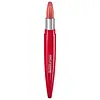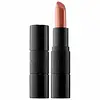What's inside
What's inside
 Key Ingredients
Key Ingredients

 Benefits
Benefits

 Concerns
Concerns

 Ingredients Side-by-side
Ingredients Side-by-side

Polyglyceryl-2 Triisostearate
EmulsifyingDiisostearyl Malate
EmollientJojoba Esters
EmollientBis-Behenyl/Isostearyl/Phytosteryl Dimer Dilinoleyl Dimer Dilinoleate
EmollientIsostearyl Hydroxystearate
EmollientPolyglyceryl-10 Decaisostearate
EmollientSimmondsia Chinensis Seed Oil
EmollientSynthetic Wax
AbrasivePentaerythrityl Tetraisostearate
EmollientHydrogenated Styrene/Methylstyrene/Indene Copolymer
Hydrogenated Microcrystalline Wax
Emulsion StabilisingTrimethylolpropane Triisostearate
EmollientRicinus Communis Seed Oil
MaskingEthylhexyl Palmitate
EmollientCera Alba
EmollientSilica
AbrasivePolyethylene
AbrasiveDisteardimonium Hectorite
StabilisingCalcium Aluminum Borosilicate
Glass Beads
AbrasiveParfum
MaskingPropylene Carbonate
SolventVaccinium Macrocarpon Seed Oil
Skin ConditioningPentaerythrityl Tetra-Di-T-Butyl Hydroxyhydrocinnamate
AntioxidantTrihydroxystearin
Skin ConditioningPropyl Gallate
AntioxidantTocopherol
AntioxidantSodium Hyaluronate
HumectantGlucomannan
Skin ConditioningHelianthus Annuus Seed Oil
EmollientRosmarinus Officinalis Leaf Extract
AntimicrobialCI 12085
Cosmetic ColorantCI 15850
Cosmetic ColorantCI 15985
Cosmetic ColorantCI 17200
Cosmetic ColorantCI 19140
Cosmetic ColorantCI 42090
Cosmetic ColorantCI 45380
Cosmetic ColorantCI 45410
Cosmetic ColorantCI 73360
Cosmetic ColorantCI 77163
Cosmetic ColorantCI 77491
Cosmetic ColorantCI 77492
Cosmetic ColorantCI 77499
Cosmetic ColorantCI 77742
Cosmetic ColorantCI 77891
Cosmetic ColorantPolyglyceryl-2 Triisostearate, Diisostearyl Malate, Jojoba Esters, Bis-Behenyl/Isostearyl/Phytosteryl Dimer Dilinoleyl Dimer Dilinoleate, Isostearyl Hydroxystearate, Polyglyceryl-10 Decaisostearate, Simmondsia Chinensis Seed Oil, Synthetic Wax, Pentaerythrityl Tetraisostearate, Hydrogenated Styrene/Methylstyrene/Indene Copolymer, Hydrogenated Microcrystalline Wax, Trimethylolpropane Triisostearate, Ricinus Communis Seed Oil, Ethylhexyl Palmitate, Cera Alba, Silica, Polyethylene, Disteardimonium Hectorite, Calcium Aluminum Borosilicate, Glass Beads, Parfum, Propylene Carbonate, Vaccinium Macrocarpon Seed Oil, Pentaerythrityl Tetra-Di-T-Butyl Hydroxyhydrocinnamate, Trihydroxystearin, Propyl Gallate, Tocopherol, Sodium Hyaluronate, Glucomannan, Helianthus Annuus Seed Oil, Rosmarinus Officinalis Leaf Extract, CI 12085, CI 15850, CI 15985, CI 17200, CI 19140, CI 42090, CI 45380, CI 45410, CI 73360, CI 77163, CI 77491, CI 77492, CI 77499, CI 77742, CI 77891
Polyglyceryl-2 Triisostearate
EmulsifyingPolybutene
Pentaerythrityl Tetraisostearate
EmollientHydrogenated Polydecene
EmollientOctyldodecanol
EmollientHydrogenated Polyisobutene
EmollientCI 77891
Cosmetic ColorantSynthetic Wax
AbrasiveCera Microcristallina
Emulsion StabilisingMethyl Hydrogenated Rosinate
PerfumingC10-18 Triglycerides
EmollientCI 77492
Cosmetic ColorantC12-15 Alkyl Benzoate
AntimicrobialEthylene/Propylene Copolymer
AbrasiveLimnanthes Alba Seed Oil
Skin ConditioningZea Mays Starch
AbsorbentButyrospermum Parkii Butter
Skin ConditioningCI 15985
Cosmetic ColorantSynthetic Fluorphlogopite
CI 77499
Cosmetic ColorantCI 15850
Cosmetic ColorantCeramide NP
Skin ConditioningStearalkonium Hectorite
Gel FormingParfum
MaskingTocopherol
AntioxidantPropylene Carbonate
SolventCI 19140
Cosmetic ColorantAmmonium Glycyrrhizate
MaskingTocopheryl Acetate
AntioxidantCitric Acid
BufferingPolyglyceryl-2 Triisostearate, Polybutene, Pentaerythrityl Tetraisostearate, Hydrogenated Polydecene, Octyldodecanol, Hydrogenated Polyisobutene, CI 77891, Synthetic Wax, Cera Microcristallina, Methyl Hydrogenated Rosinate, C10-18 Triglycerides, CI 77492, C12-15 Alkyl Benzoate, Ethylene/Propylene Copolymer, Limnanthes Alba Seed Oil, Zea Mays Starch, Butyrospermum Parkii Butter, CI 15985, Synthetic Fluorphlogopite, CI 77499, CI 15850, Ceramide NP, Stearalkonium Hectorite, Parfum, Tocopherol, Propylene Carbonate, CI 19140, Ammonium Glycyrrhizate, Tocopheryl Acetate, Citric Acid
Ingredients Explained
These ingredients are found in both products.
Ingredients higher up in an ingredient list are typically present in a larger amount.
Ci 15850 is the pigment color red. It is an azo dye and created synthetically.
Azo dyes need to be thoroughly purified before use. This allows them to be more stable and longer-lasting.
This ingredient is common in foundations, lipsticks, and blushes. This color is described as brown/orangey red.
It has many secondary names such as Red 6 and Red 7. According to a manufacturer, Red 6 usually contains aluminum.
Learn more about CI 15850Ci 15985 is a dye made from petroleum. It is synthetically created and approved by the FDA for use in foods and cosmetics.
The color of this dye is orange/yellow.
This ingredient can be found in makeup, sun care, and skincare.
Learn more about CI 15985CI 19140 is also known as Tartrazine. Tartrazine is a synthetic dye used in cosmetics, foods, and medicine to add a yellow color.
Tartrazine is created from petroleum and is water-soluble.
Some people may experience allergies from this dye, especially asthmatics and those with an aspirin intolerance.
Learn more about CI 19140Ci 77492 is also hydrated iron III oxide. It's sole purpose is to give a yellow hue to products.
Iron III oxides are classified as inorganic chemicals for coloring.
Synthetically created Ci 77492 is considered safer than those naturally found. This is because the synthetically created version may contain less impurities. Iron oxides are generally non-toxic and non-allergenic.
Learn more about CI 77492Ci 77499 is also hydrated iron III oxide. It is created from mixing red and black iron oxides. This helps give shades of darkness to a product.
Iron III oxides are classified as inorganic chemicals for coloring.
Ci 77891 is a white pigment from Titanium dioxide. It is naturally found in minerals such as rutile and ilmenite.
It's main function is to add a white color to cosmetics. It can also be mixed with other colors to create different shades.
Ci 77891 is commonly found in sunscreens due to its ability to block UV rays.
Learn more about CI 77891Parfum is a catch-all term for an ingredient or more that is used to give a scent to products.
Also called "fragrance", this ingredient can be a blend of hundreds of chemicals or plant oils. This means every product with "fragrance" or "parfum" in the ingredients list is a different mixture.
For instance, Habanolide is a proprietary trade name for a specific aroma chemical. When used as a fragrance ingredient in cosmetics, most aroma chemicals fall under the broad labeling category of “FRAGRANCE” or “PARFUM” according to EU and US regulations.
The term 'parfum' or 'fragrance' is not regulated in many countries. In many cases, it is up to the brand to define this term.
For instance, many brands choose to label themselves as "fragrance-free" because they are not using synthetic fragrances. However, their products may still contain ingredients such as essential oils that are considered a fragrance by INCI standards.
One example is Calendula flower extract. Calendula is an essential oil that still imparts a scent or 'fragrance'.
Depending on the blend, the ingredients in the mixture can cause allergies and sensitivities on the skin. Some ingredients that are known EU allergens include linalool and citronellol.
Parfum can also be used to mask or cover an unpleasant scent.
The bottom line is: not all fragrances/parfum/ingredients are created equally. If you are worried about fragrances, we recommend taking a closer look at an ingredient. And of course, we always recommend speaking with a professional.
Learn more about ParfumPentaerythrityl Tetraisostearate is derived from isostearic acid. It is an emollient and emulsifier.
The highest concentration of this ingredient is found in lipsticks.
This ingredient is minimally water soluble and may not be Malassezia folliculitis, or fungal-acne safe.
Learn more about Pentaerythrityl TetraisostearateThis ingredient is a form of glycerin with emulsifying and emollient properties.
As an emulsifier, this ingredient helps keep products together while adding a thick texture. The manufacturer states this ingredient has emollient properties. Emollients help keep the skin hydrated by trapping moisture in.
Polyglyceryl-2 Triisostearate is created by reacting diglycerin and isostearic acid. Due to the isostearic acid base, it may not be safe for Malassezia or fungal acne.
Learn more about Polyglyceryl-2 TriisostearateThis ingredient is a solvent. It helps dissolve active ingredients and alter the texture of products.
Propylene Carbonate is commonly used in makeup and with clay, such as montmorillonite or bentonite.
Studies show this ingredient to be safe for cosmetics. When it is undiluted, it can cause skin irritation. (It is always diluted in skincare and makeup). This ingredient is water-soluble.
Propylene Carbonate is created from propylene glycol and carbonic acid.
Learn more about Propylene CarbonateSynthetic Wax is created from fossil fuels such as natural gas. It is used to enhance texture, adjust pH, and as an occlusive.
It may also be used as an abrasive ingredient to exfoliate the skin.
Synthetic Wax may not be fungal acne safe.
Learn more about Synthetic WaxTocopherol (also known as Vitamin E) is a common antioxidant used to help protect the skin from free-radicals and strengthen the skin barrier. It's also fat soluble - this means our skin is great at absorbing it.
Vitamin E also helps keep your natural skin lipids healthy. Your lipid skin barrier naturally consists of lipids, ceramides, and fatty acids. Vitamin E offers extra protection for your skin’s lipid barrier, keeping your skin healthy and nourished.
Another benefit is a bit of UV protection. Vitamin E helps reduce the damage caused by UVB rays. (It should not replace your sunscreen). Combining it with Vitamin C can decrease sunburned cells and hyperpigmentation after UV exposure.
You might have noticed Vitamin E + C often paired together. This is because it is great at stabilizing Vitamin C. Using the two together helps increase the effectiveness of both ingredients.
There are often claims that Vitamin E can reduce/prevent scarring, but these claims haven't been confirmed by scientific research.
Learn more about Tocopherol